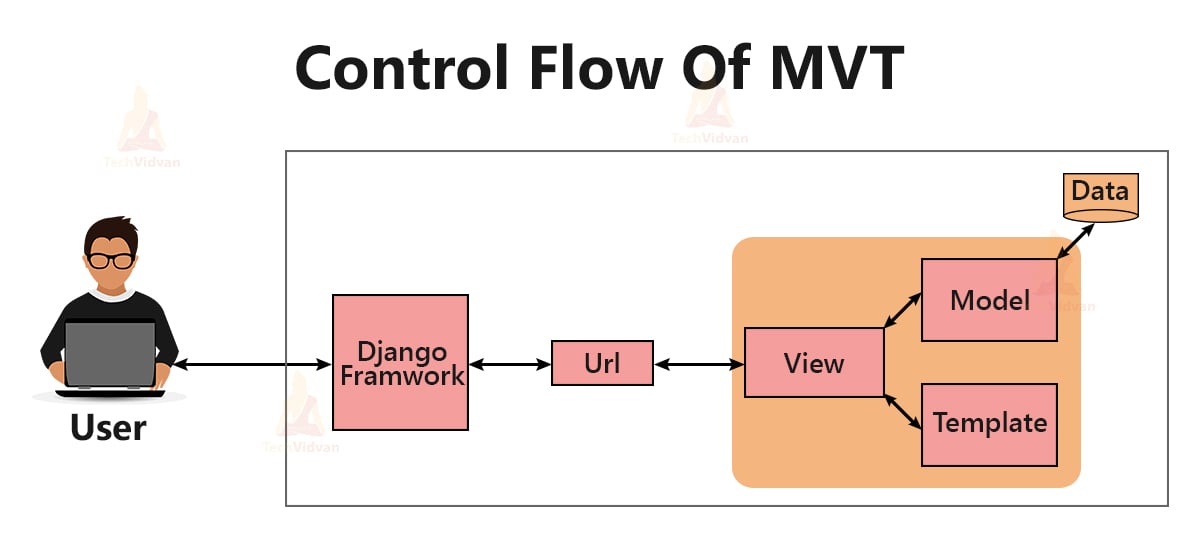All You Need to Know About Django MVT Architecture
In our previous article, we learned “Django’s MVC Architecture”. We have discussed the MVC (Model-View-Controller) in depth. We have seen the need to introduce the MVC architecture after discontinuing the old practice of having all the codes in a single file.
Well, Django at its core follows the MVC model but with a slight variation. The slighter variation being, the MVT (Model-View-Template). Let’s learn more about it.
Understanding Django MVT Architecture
In this architecture, the model remains the same, it provides the interface for storing the data in the database. Just like View in the MVC model, Django replaces it with a Template in its framework.
“The controller part in the MVC model is taken care of by View in the MVT architecture”. You must have come across this line surfing various articles, blogs, and books too, but, this isn’t true. A Django view is not a controller. Let’s understand what view is, and end your search, and kill the confusion for the final time.
Let’s discuss these three divisions in more detail.
1. Model
The model is going to work the same, as that in the MVC. It is held responsible for providing an interface for storing and maintaining the data in the database.
Generally, relational database management software such as MySQL, PostgreSQL, etc are put in use. It responds to the request created by View.
2. View
It is that part of the system that accepts the user input made by the Template mode, retrieves the data from the database via the models, and sends back the response to the user.
It takes care of the interpretation of the user’s request to instruct the Model for data retrieval and also convert that data to present it in a user-friendly manner.
Django uses the idea of request-response by creating HTTP requests and response objects.
When a page is called i.e., requested, Django creates an HTTP requests object. The view receives that request from the user and then accordingly processes the data in the database via the models. Then the view is held responsible for presenting the model to the user as an HTTP response object.
It is also a very popular statement that the Django framework is the controller itself. But, it is also not entirely true. Django can do a lot more work than just handling requests and responses.
Django’s Middleware is a framework that handles all the requests and response processing, after following all the necessary security and authentication checks.
3. Template
The template works in the same manner as that of View in the MVC model. It provides a user interface to users.
Template handles all the HTML, CSS pages, and displays the actual content of the web applications the user is using. It takes all the user’s input and provides easy interaction with the web applications.
Django uses Django Template Language (DML) by which one template can be used by multiple views to represent different kinds of data.
Control Flow Of Django MVT
1. The user asks for a URL request to fetch a resource, to Django through Template.
2. Django searches for the URL request.
3. The URL calls the View, as accordingly the coding is done.
4. Then the View will interact with the Model and retrieve the suitable data from the database.
5. Then View compiles that response created by the Model back to the Template. This way a request-response cycle takes place.
MVT vs MVC
After the thorough discussion, let’s finally wrap up by mentioning the difference between the MVT and the MVC models.
In MVC, we have a controller that handles both Model and View. Where in MVT, the View is held responsible for tackling all HTTP request-response operations and the Django framework manages the controller part.
MVC is not a suitable choice for developing a small web application due to its complexity, whereas MVT is the best option to develop both small and large applications.
Modification is not an easy task in MVC because of its hectic coding of the controller part. Modifying MVT is quite easy as the framework itself handles the controller part.
Summary
So, with this, we come to the end of this article. If you are still confused between MVC and MVT, just keep in mind both work quite in a similar manner with just changes in terminologies.
Keep coding!
Did you enjoy reading this article? Feel free to provide your feedback.

